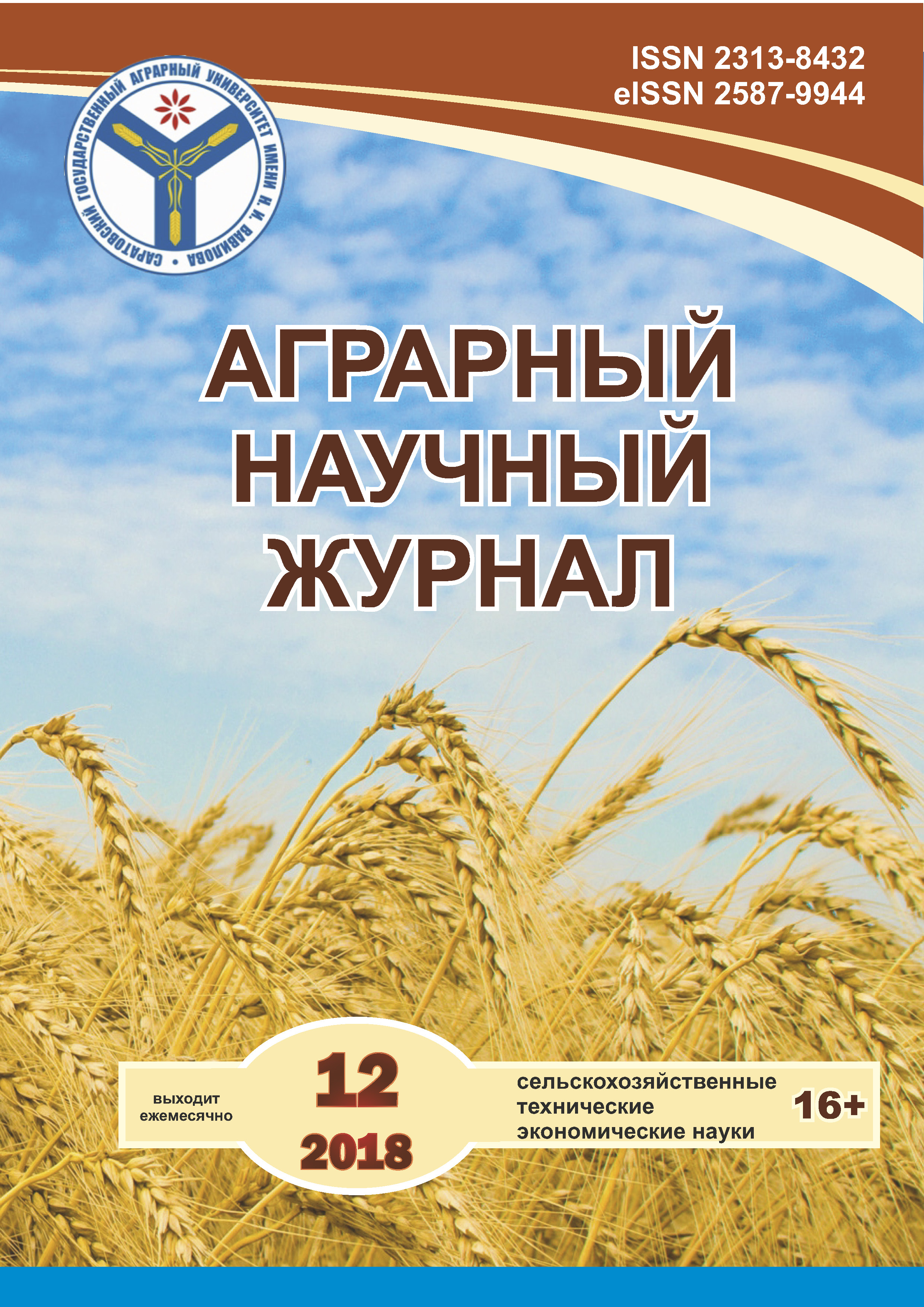THE PRODUCTIVITY OF CULTIVARS OF SPRING DURUM WHEAT IN THE CHUVASH REPUBLIC
DOI:
https://doi.org/10.28983/asj.v0i12.414Keywords:
spring hard wheat, varieties, variety testing, plant height, bushiness, seed weight, number of grains, yieldAbstract
The article presents experimental data of spring hard wheat variety tests in the agro-climatic conditions of the Chuvash Republic in 2015 and 2017. In UNPC "Student" of the Chuvash state agricultural Academy in 2015, conducting research on environmental variety trials five varieties of spring durum wheat: 1) bezenchukskaya Niva, 2) bezenchukskaya 200, 3) bezenchukskaya 205, 4) bezenchukskaya 209, 5) luch 25. The results of biometric analysis of spring durum wheat plants showed that the height of plants by variety averaged over two years was from 74.55 to 104.75 cm. The most marked low-growing variety bezenchukskaya 200, the highest plant was observed in cultivar bezenchukskaya 205. The best indicators of productive tilling capacity identified in the variety bezenchukskaya Niva and bezenchukskaya 209. The best indicators of crop structure recorded in the variety bezenchukskaya the field, where the length of the ear was 5.1 cm, number of seeds per spike of 22.9 units, and weight of seeds per spike to 1.12 g. the Lowest annual rates were observed in cultivar bezenchukskaya 205, number of seeds per spike of 16.8 PC, and the seed weight was 0.76 g. It was found that the number and weight of grains in the ear depending on the variety varied in proportion to the length of the ear. The weight of 1000 seeds ranged from 42.32 to 53.27 grams. Accounting of biological yield revealed the advantage of Bezenchuk Niva-34.1 t/ha, the lowest yield of 19.6 t / ha formed Bezenchuk 205.
Downloads
References
2. Ложкин А. Г., Каюкова О.В., Нестерова О.П. Экологическое испытание сортов яровой твердой пшеницы в агроклиматических условиях Чувашской Республики // Агроэкологические и организационно-экономические аспекты создания и эффективного функционирования экологически стабильных территорий: материалы Всерос. науч.-практ. конф. – Чебоксары, 2017. - С. 101-104.
3. Ларионов Г.А., Ягодкина И.Е. Практикум по технологии приемки, хранения, переработки и стандартизации зерна // Чебоксары, ФГБОУ ВО Чувашская ГСХА,2017.–268с.
4. Ларионов Г.А. Практикум по технологии хранения, переработки и стандартизации зерна // Чебоксары, Полиграфический отдел ФГОУ ВПО ЧГСХА, 2006. – 236 с.
5. Ложкин А.Г., Димитриев В.Л., Елисеев И.П. Яровая твердая пшеница в Чувашской Республике // Вестник Чувашской государственной сельскохозяйственной академии. – Чебоксары, 2017. - № 3 (3). – С. 22-26.
6. Мальчиков П.Н., Вьюшков А.А., Мясникова М.Г. Формирование моделей сортов твердой пшеницы для Средневолжского региона России // Монография. – Самара: СамНЦ РАН, 2012. – 112с.
7. Мальчиков П.Н., Мясникова М.Г. Сорта яровой твердой пшеницы для cредневолжского и уральского регионов российской федерации // Достижения науки и техники АПК. - 2015. Т. 29. - № 10. - С. 58-62.
8. Шевченко С. Н., Корчагин В.А., Горянин О.И., Мальчиков П.Н., Вьюшков А.А., Чичкин А.П. Производство высококачественного зерна яровой твердой пшеницы в Среднем Поволжье // научно практическое руководство; Самарский НИИСХ. - Самара: СамНЦ РАН, 2010. - 75с.








